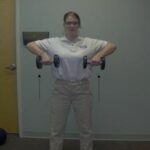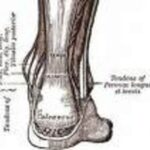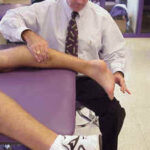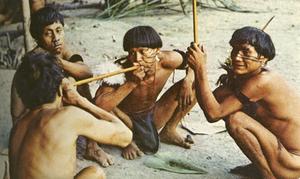What is a Tricep Strain?
A tricep strain is damage to the large muscle at the back of the upper arm, known as the triceps brachii. This muscle is responsible for the extension of the arm at the elbow. A tricep strain can happen anywhere in the triceps brachii, but usually occurs where the muscle and tendon meet, as this is the weakest point of the triceps muscle. Body parts that can be involved in a tricep strain include the tricep muscle, the bones of the shoulder and arm, the tendons of the tricep muscle, and soft tissues surrounding the muscle (including nerves, lymph vessels, and nerve vessels). As with many other sports injuries there are different grades, or levels, of injury. They are as follows:
Grade I (mild): Minor over-stretching of the muscle. Pain and inflammation will be minimal, and there will be no loss of strength.
Grade II (moderate): Some tearing of the fibers within a muscle and also possibly at the tendon. There may also be some weakness.
Grade III (severe): Fibers of the muscle become separated and there is a complete rupture of the triceps muscle. The muscle-tendon-bone attachment becomes disconnected. These types of strains are may require surgery to repair the damaged muscles and tissues.
There are also 2 types of tricep strains, Tricep Muscle Tears and Tricep Tendonitis. In a tricep muscle tear there is usually an inflammation of the tricep muscle. In severe cases the tricep muscle can actually be torn away from the bone. Tricep muscle tears occur in high-impact sports such as heavy weight lifting, especially when the muscles have not been warmed up prior to lifting. Tricep Tendonitis is an inflammation of the tricep tendon. It is considered a repetitive strain injury and occurs in sports where there are repetitive movements such as playing tennis.
What Causes a Tricep Strain?
Tricep strains are common among all athletes, but males over the age of thirty-five and those who engage in heavy weight lifting or participate in repetitive arm sports are at a greater risk for this type of strain. Examples of sports that can cause a tricep strain include weight lifting, bodybuilding, tennis, football, and hockey. Other factors that can contribute to tricep strains include a poor diet and nutrition, obesity, and previous injuries to the tricep muscles.
The main causes for a tricep strain are over-stretching of the tricep brachii muscle and an imbalance in the muscles. People tend to work their bicep muscles harder, causing an imbalance. This imbalance makes the tricep muscle more susceptible to strains because the bicep is stronger. Damage of the tricep muscle can involve tearing of the muscle tissue and damage to the blood vessels, causing bruising.
What are the Symptoms of a Tricep Strain?
The most common signs and symptoms of a tricep brachii strain or injury include pain and tenderness in the muscles, swelling and stiffness of the muscles, muscle inflammation, spasms of the muscle, redness or bruising at the site of injury, and an inability to freely move the injured area. Pain may increase upon movement or when trying to stretch the muscles, especially when trying to extend the forearm at the elbow.
How Do You Treat a Tricep Strain?
Most minor tricep strains and injuries can be treated at home. Using an ice pack during periods of rest can help to reduce inflammation and swelling. The ice pack should be placed directly on the muscle strain and left on for 15 to 20 minutes. Heat and also be useful to reduce aches and pains but should only be used after the swelling has gone down as it can aggravate the injury if used to early in the healing process. Wearing a brace or a strap to hold the arm in its correct position also helps as it takes pressure off the tendon. In conjunction with these therapies, anti-inflammatory medications such as ibuprofen can also be used to help with inflammation and pain.
More severe injuries need to be treated by a physician. Some tricep injuries can be rehabilitated with exercises. If rehabilitation is not successful surgical treatment may be required. Surgery is not useful for inflammation and is only performed if the tricep tendon is ruptured or torn away from the bone.
As a nationally certified Medical Assistant, I have had the opportunity to work in several different fields of medicine, including sports medicine. Tricep Strains, though not a common injury, were observed and were generally treatable at home by the patient. Only in severe cases were patients referred to a surgeon for repair of the tendon of the tricep brachii muscles.
Sources
Jameson, Timothy. Repetitive Strain Injuries. Columbus, Ohio: McGraw-Hill; 1st Edition, 1998.
Flegel, Melinda. Sport First Aid.
Champaign, IL: Human Kinetics; 3rd Edition, 2004.






